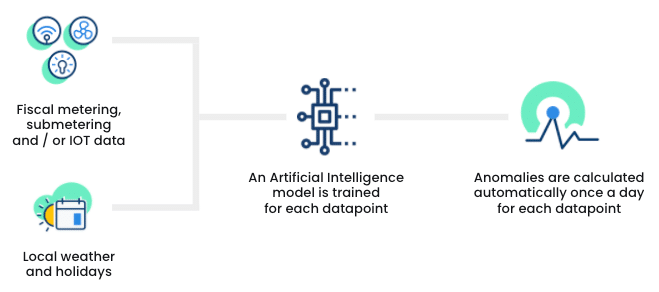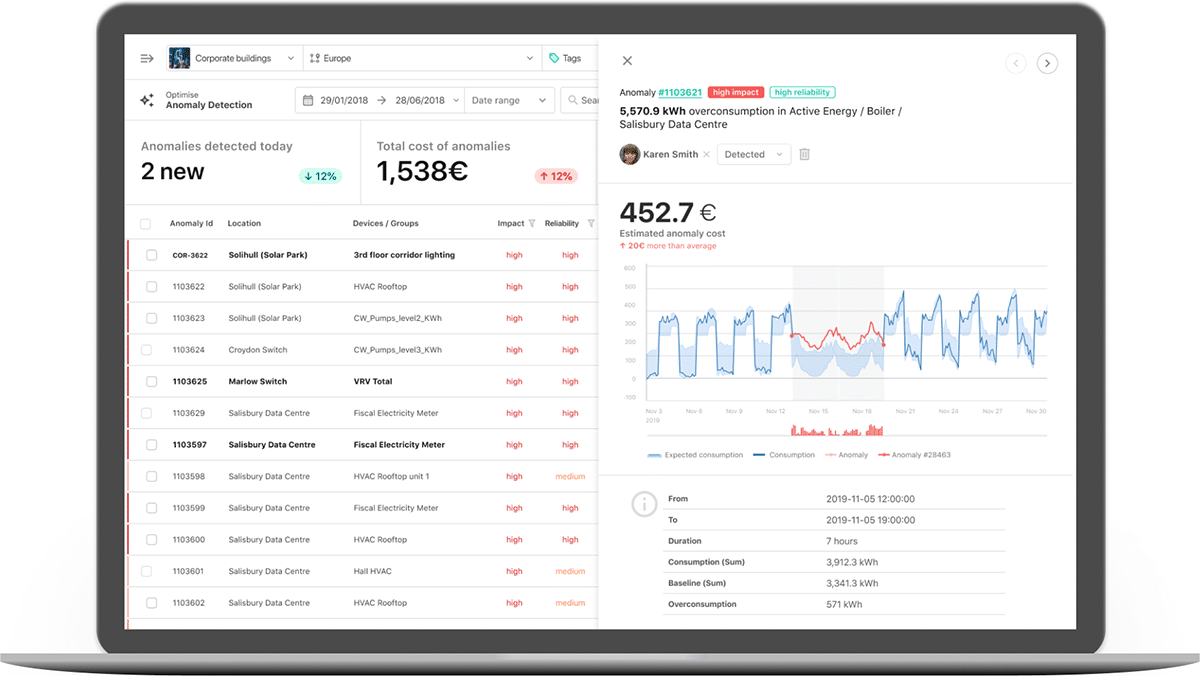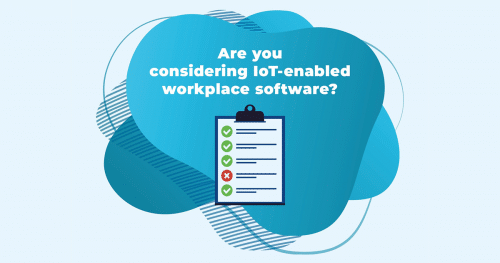Photo by CHUTTERSNAP on Unsplash
IoT (Internet of Things) is transforming the way we manage our buildings. And with the current move to hybrid work, it is more useful than ever.
But IoT is not only useful for optimizing building occupancy, security, or indoor air quality, it also contributes to improving energy efficiency and environmental impact. This is where Energy Intelligent Management comes into play thanks to the Energy IoT.
The Energy Challenge in the New Hybrid Workplace
Saving energy in buildings is now more necessary than ever, especially with the hybrid working model, which is progressively being implemented in companies post COVID-19. During the pandemic, many employees got used to working from home (WFH) and discovered some of the benefits it can offer. As a result, today many office workers prefer to combine WFH with face-to-face work.
Therefore, many of our buildings are becoming hybrid workplaces, where occupancy and usage time fluctuate significantly.
This is bringing a new challenge for energy and facility managers: making buildings energy efficient in the age of hybrid work.
For example, buildings now do not have fixed time slots for energy consumption, and their peak consumption is not always at the same moment. As a result, many buildings consume energy constantly and unnecessarily in many areas of their premises, with no users or low occupancy compared to pre-COVID use.
But the challenge of managing energy in buildings in this new hybrid work model can be solved thanks to the implementation of IoT. And, in addition, it will also turn your buildings into Smart and Sustainable Buildings, saving more energy costs than ever before.
How Does the Internet of Things (IoT) Impact Energy Management in Buildings?
The Internet of Things (IoT) is a network of physical objects (“things”), embedded with sensors, advanced software, and other technologies to communicate with other systems over the Internet. In other words, it is a smart grid that connects and shares “things’ data” through the Internet.
Now, let’s imagine for a moment that you can make your buildings sustainable and energy-efficient, powered by Energy IoT.
To begin with, what do we mean by Energy IoT?
In the case of energy management in buildings, we talk of Energy IoT. Those sensors, software, and advanced technologies connect and share the energy data of your buildings.
Let’s create a hypothetical scenario to illustrate the energy IoT more clearly. Imagine you own a 10-storey building, and the electricity bills you receive have not changed after implementing the hybrid working model. The building has fewer users per day than pre-COVID, and it still consumes the same energy.
With your lighting system connected to the IoT and your occupancy monitoring system, you find that there are hours with fewer occupants, and some areas have fallen into disuse. You already have the information you need to schedule your LED lights to be turned on and off.
In parallel, your smart-meter system connected to your EMS (Energy Management System) detects consumption peaks where there were none before. These peaks have led to a higher level of energy consumption, which translates into a significant increase in your electricity bill. This information has also allowed you to detect an anomaly in the office supplies warehouse!
And you can correct it in time, avoiding unnecessary energy consumption.
These are just a few examples of Energy IoT use cases. But there are many equipment functions within a building that can be connected and automated to enhance performance, increase efficiency and reduce expenses even further.
How to Implement Your Energy Intelligence Strategy Thanks to IoT
When you implement Energy IoT technologies in your building, such as smart meters, control of lighting and HVAC systems, and EMS, among other technologies, it will be able to carry out an Energy Intelligent Management Strategy.
Spacewell’s DEXMA Platform is an example of Energy IoT in action. This advanced energy management platform enables energy managers to implement a complete intelligent energy strategy in all their buildings, automating a multitude of tasks.
The DEXMA Platform is designed for this type of advanced energy management, as its functions are based on 3 main pillars:
1 – Detect: This is a key first step for the successful accomplishment of the energy intelligence strategy and thus to achieve the next 2 steps. We highly recommend it, even if not all companies need it.
It is about the identification of the major energy-saving opportunities of each building of the portfolio. Thanks to the application of artificial intelligence, DEXMA Detect will identify and classify your buildings according to their savings potential. This will help you to start your energy efficiency projects in the most interesting buildings.
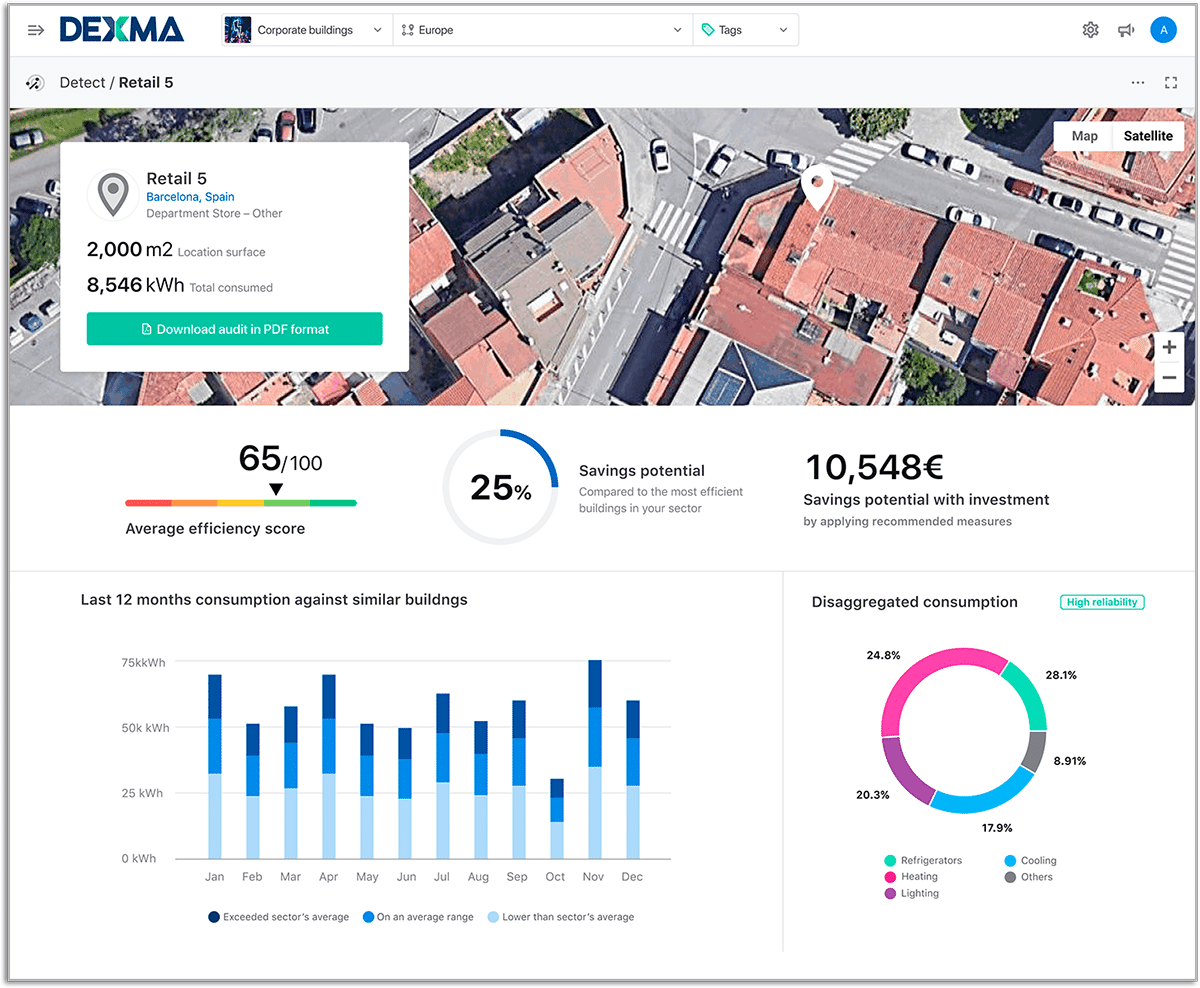
2 – Analyse: This second pillar is the most robust. With it, you can get the energy data from your sensors, no matter the protocol or the hardware you chose, and monitor it in real time. Thanks to this feature, your energy managers will be able to implement the most tedious part of the energy intelligence strategy.
Furthermore, you will find a multitude of tools to perform advanced consumption analyses, check measurements, and verify savings, or create personalized dashboards, among other functions.
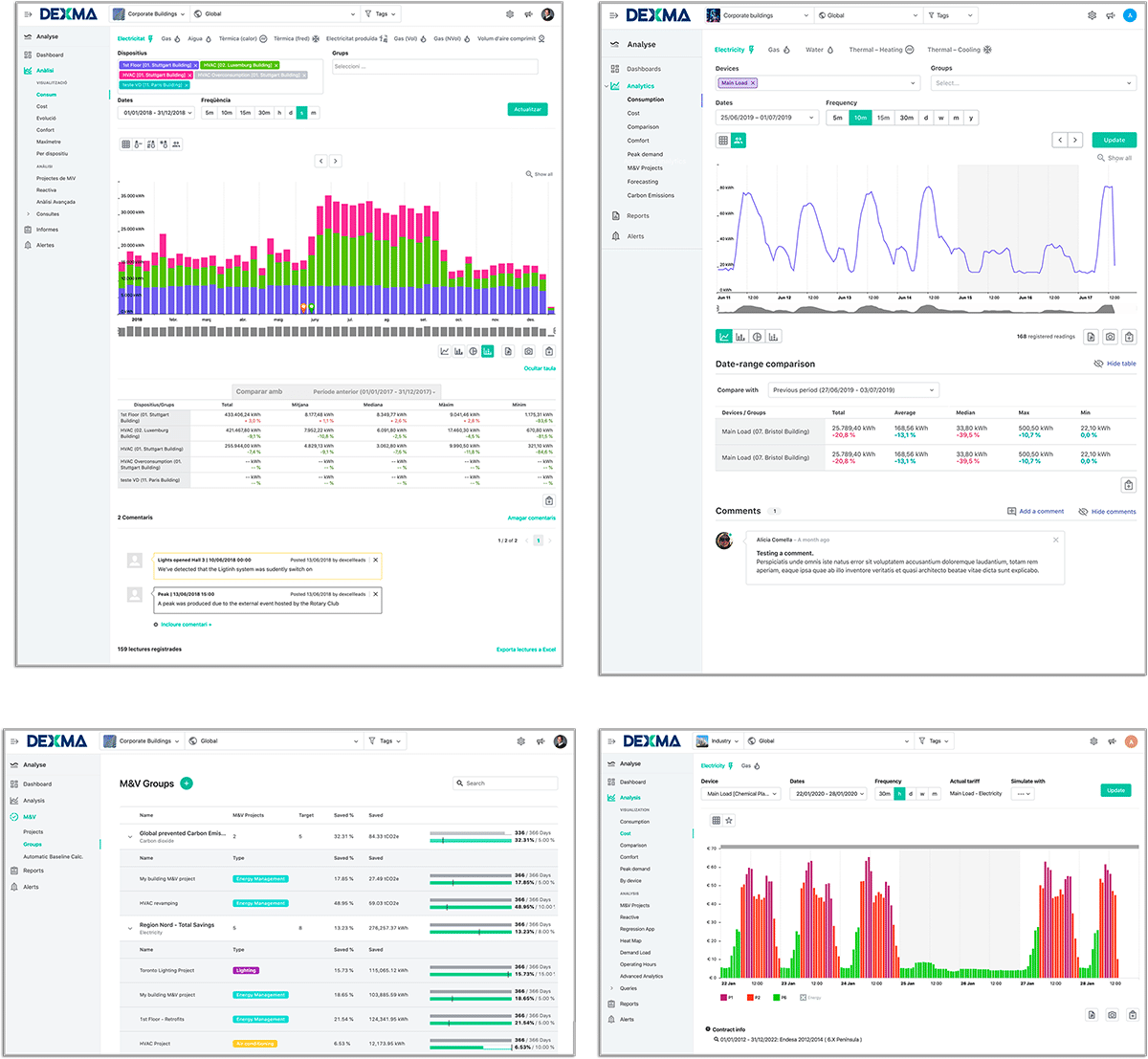
3 – Optimise: Last but not least, this third pillar and tool called DEXMA Optimise will help energy professionals to automate data analysis processes 24/7, reducing time and costs.
How does it work? Thanks to the Energy IoT again and Artificial Intelligence (AI) technology, DEXMA Optimise estimates what a building or a facility should consume compared to what it currently consumes. If it detects anomalies in the results, it will create tasks and recommendations with the related information.
